“Baking with gums?” you say. “Why on earth would you bake with GUM!??”
Good question. I’m glad you asked.
You may have heard of these odd “gum” ingredients and wonder about them: is xanthan gum necessary in gluten free baking? And what is xanthan gum made of? Is xanthan gum safe for celiacs and are there substitutes for xanthan gum in gluten free baking?
Another similar ingredient is psyllium husk. People ask me all the time what does psyllium husk do in gluten free baking?! {Especially if you’ve seen it listed in products like Metamucil, you may be surprised to see it in a gluten free recipe!} If you’re wondering the same thing, you’ve come to the right place!
Gluten Free Baking with Gums
We gluten free bakers have to know all about these mysterious “gums” because they do the job of gluten in our gluten free recipes. I know it sounds peculiar, but it’s really just a lesson in baking chemistry.
No individual gluten-free flour can replace wheat flour on its own, so we bakers blend several together to mimic wheat’s qualities. One of the trickiest wheat flour attributes to replicate is its stickiness: its gluten holds food together, and without something to replace it, most gluten free recipes wind up a crumbly mess.
That’s where xanthan gum and guar gum and other ingredients like psyllium husk come in.
Xanthan Gum (zan-than)
This additive is most often used to stand in for the glue-like qualities of gluten. You might have also noticed xanthan gum on ingredient labels of other foods like ice cream, salad dressing, gravies and even toothpaste.
Xanthan gum is a natural soluble fiber carbohydrate that is produced by fermenting a microorganism (Xanthomonas campestris, in case you need to know) with sugar, derived from corn, soy, dairy or wheat (after processing, no residue from the original food remains in xanthan gum, however those with severe allergies should determine the growing medium and make their own choice).
Xanthan gum is valued because it helps to keep oil and water mixed (hence its benefit in dressings) and also provides binding structure to hold carbon dioxide bubbles inside the food as it is cooking, keeping products like gluten-free bread from falling when removed from the oven.
It’s considered totally food safe and in face is considered to be a prebiotic soluble fiber that feeds the beneficial bacteria in your gut. In higher quantities, it can increase the levels of fluid in the intestine and stimulate the movement of food in the gut, promoting softer, bulkier stools; it may even may slow the absorption of sugar from the digestive tract enough to improve satiety.
Xanthan gum is pricey – running $10-$14.00 or so, per 8 ounces. Luckily, we only need a pinch in gluten-free recipes (see chart below).
Note: I’ve already added just the right amount of xanthan gum to my award-winning gfJules Flour and baking mixes, making it super easy for you! Do NOT add any additional gums or psyllium husk to any of my recipes or mixes unless specifically noted in my recipes. The specific blends of specialty gluten free flours I use actually allow me to use very little gums at all in my products, comparatively, so if you add more, it may lead to gummy results.
Guar Gum
Another option is Guar Gum – a powder derived from the seeds of legumes (guar beans) that can add a gumminess to gluten-free baked goods if used out of proportion.
It also has laxative properties, and some find that they are sensitive to it, or even feel especially full from eating products containing guar gum. I find that guar works best in cake recipes, but see the chart below for recommended amounts.
If your all purpose gluten-free flour does not already contain a gum, use this chart as a guide to how much to add in a given type of recipe. If your all purpose gluten-free flour already contains gums, then they have been added in the appropriate general purpose amount — do NOT add more gum – more is not better here! Adding too much gum to your recipe can make it gummy (go figure!).
- Yeast Breads & Pizza Recipes: 1 1/2 tsp. xanthan gum or 2 tsp. guar gum per cup of gluten-free flour blend
- Cookies: 1/4 tsp. xanthan gum or 1/2 tsp. guar gum per cup of gluten-free flour blend
- Cakes: 1/2 tsp. xanthan gum or 3/4 tsp. guar gum per cup of gluten-free flour blend
- Quick Breads & Muffins: 3/4 tsp. xanthan gum or 1 tsp. guar gum per cup of gluten-free flour blend
Psyllium Husk Powder
Psyllium is a natural fiber derived from a shrub called Plantago ovato. Thus outer casings (or husk) of the seeds are ground into powder which, when added to liquids, becomes gelatinous and helps baked goods retain moisture.
Its ordinary use is as a colon cleanser, but when used in small amounts (2-4 tablespoons), it can offer binding properties in gluten free baking without the tummy upset. These binding properties may work to replace the gluten in gluten free recipes and can also replace eggs in vegan baking.
Purchase psyllium in whole husk or powder, but the two are not equivalent; do add powder if a recipe calls for powder, not husk. If a recipe calls for xanthan gum, you may substitute 1 teaspoon of xanthan gum for up to 2 to 3 tablespoons of psyllium powder, depending on the type of recipe.
Psyllium husk powder tends to work best in yeast applications like breads and pizza, as well as in homemade pasta recipes. For more information on using psyllium husk or powder in yeast breads, consult this article from my friend Annalise Roberts.
Gelatin
You’ve probably made Jell-O before, or used Knox unflavored gelatin in a recipe. Gelatin has amazing binding properties and can make a good replacement for gluten in certain applications. Use the amount called for in any given baking recipe, and add in with the dry ingredients.
It is NOT vegan or vegetarian, as gelatin is made from animal bones, hooves and connective tissue. There are some products which are called gelatin and are labeled “vegetarian” or “kosher.” See “pectin,” below.
Pectin
A vegetarian substitute for gelatin is Pectin. Unlike traditional gelatin, pectin is derived from the peels of apples, plums, cranberries and other citrus.
Like gelatin, it can tenderize breads and add stability to baked goods, as well. Add pectin powder with dry ingredients in baking recipes.
Agar Agar
Another vegan alternative to gelatin, Agar Agar is a flavorless combination of dried algae that can be substituted in equal amounts where recipes call for gelatin. Agar agar is used to thicken, gel, stabilize and texturize baked goods, sauces, dressings and some beverages.
It comes in powders, flakes, sheets and bars (1 bar equals 4 Tablespoons of flakes or 2 Tablespoons of powder). Generally, 1 Tablespoon agar agar flakes OR 1 teaspoon agar agar powder will thicken 1 cup of liquid. For baking, add with dry ingredients.
Other options to consider for binding: Mung Bean Flour, Pre-Gelled Potato Flour, new Flax-Based Gum Replacers; Modified Tapioca Starch.
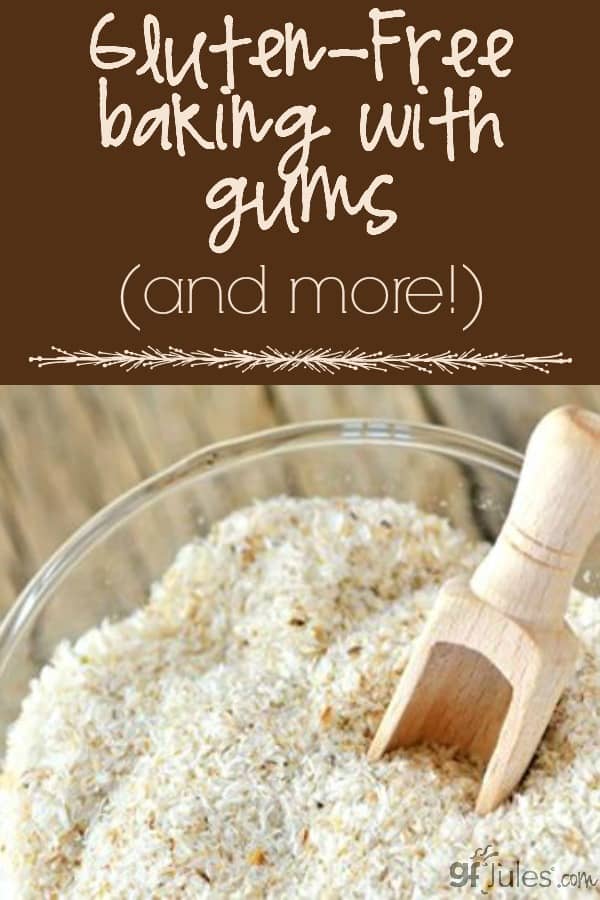


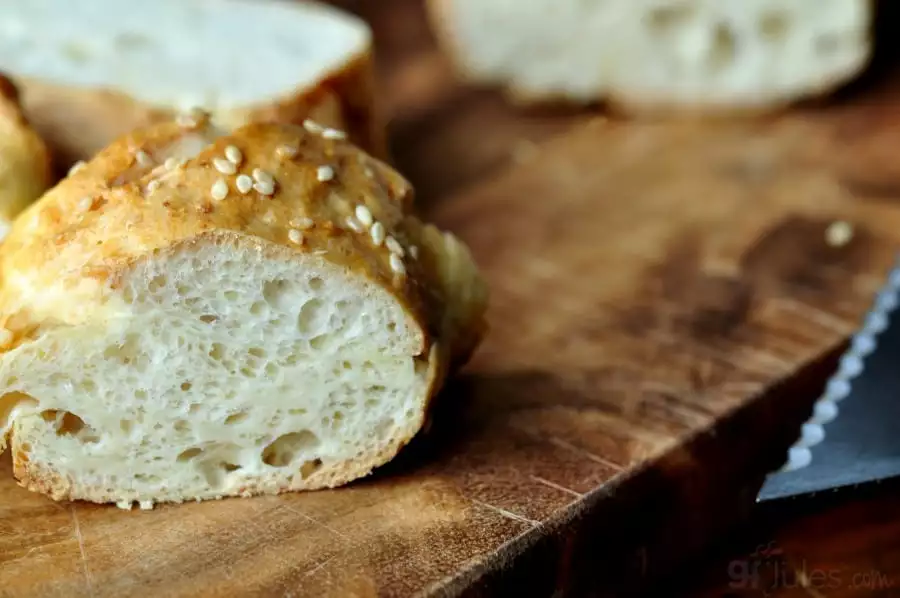
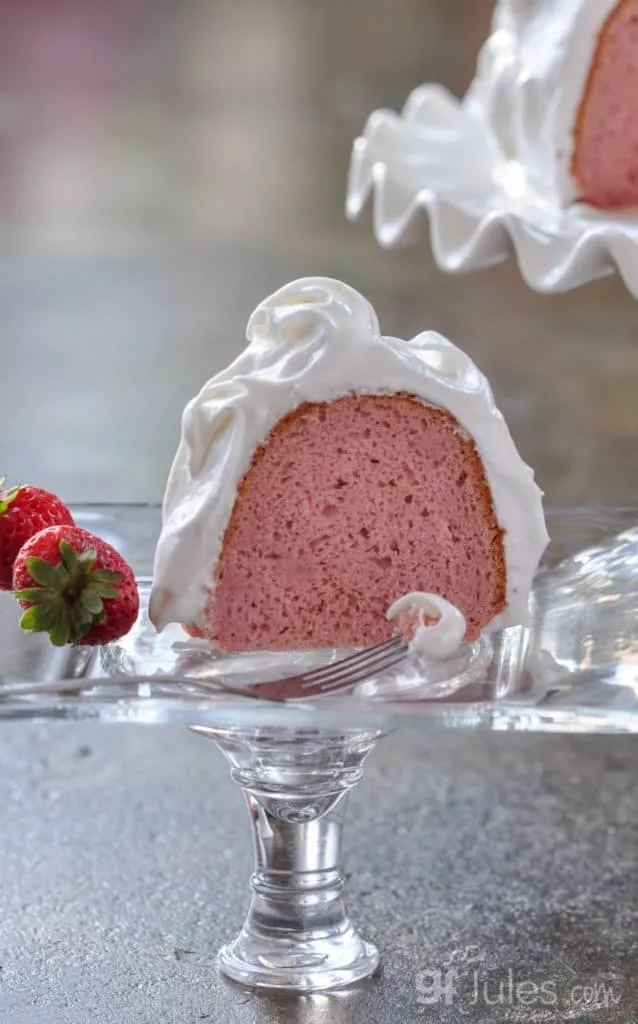



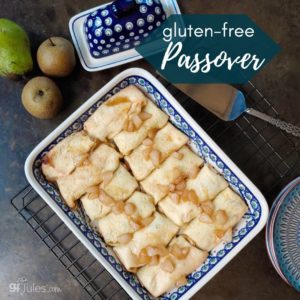














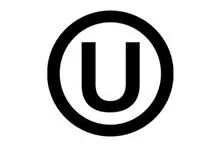
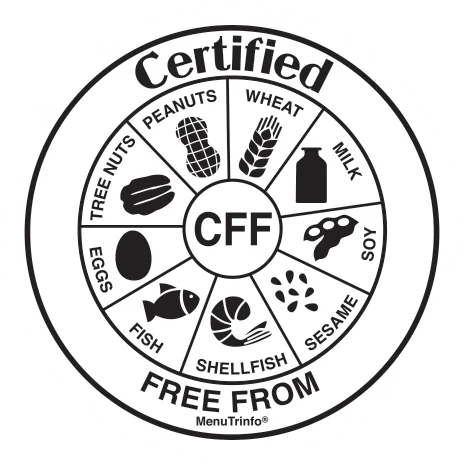

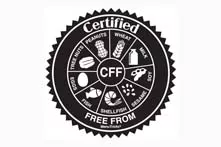
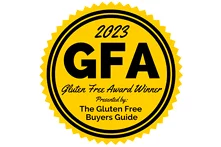
Thanks for this. Such wonderful information.
I learn so much from you! I hope I win!!
I am so happy to have found you years ago. It is nice to have someobody out there who’s gluten free baking experiences are something you can trust.
Lisa F – thank you! So happy to be of help!
I’m so glad people like you are willing to share their knowledge. It is hard figuring out how to cook all over again! Thank you.
This is great info, thank you! I just bought xanthan and guar gum a couple of days ago and haven’t been sure how to use them.
I have also shared this post on Facebook!
very useful info thanks
Thanks for all the greatinfo on gums!! So helpful
This is the most complete explanation on the subject I have seen, and very helpful. Thank you so much, Jules. I shared a link to it on FB.
Thanks for being so helpful.
Thanks for this great info on gums, it’s quite helpful!
I shared on facebook! Tx for the info!!
Thanks for the info….the chart will really come in handy when I am converting recipes!
Shared on fb.
Really, really good info here Jules! Love the detailed look at each of these binding ingredients!!


I enjoy your blog and cookbooks! Thanks for sharing your wealth of information.
I love southern style white cornmeal mix with buttermilk. I am trying to replicate this with gluten free options. I have tried several types of cornmeal and they all come out gooey in the middle. I usually cook my cornbread in a cast-iron skillet in the oven. Any suggestions?
Tina – I bake my cornbread in a cast iron skillet as well (never gooey in the middle though!). Check out my recipe and see if that helps: https://gfjules.com/recipes/
Thanks for all the great links!
I shared on Facebook https://www.facebook.com/SnowBunny79/posts/354050014654693
I shared on Twitter https://twitter.com/#!/JeweledEyedBabe/status/199853788931178497.
Thanks!


Posted on facebook and twitter! And this was a very informative blog post. Thanks!
Thanks for sharing this info on gums. I also shared this info on facebook.